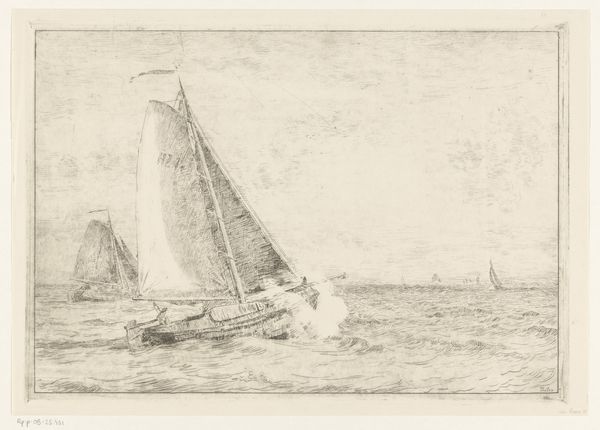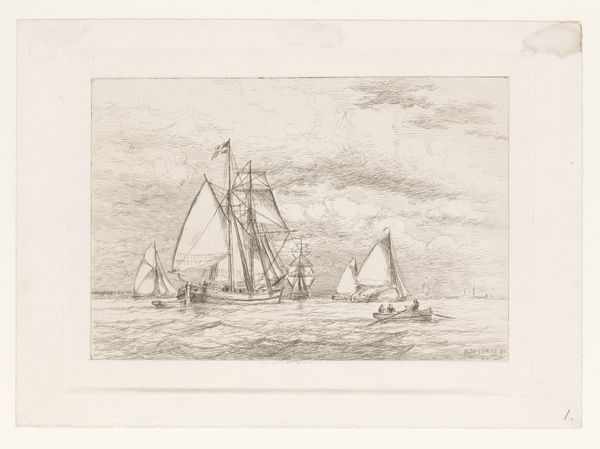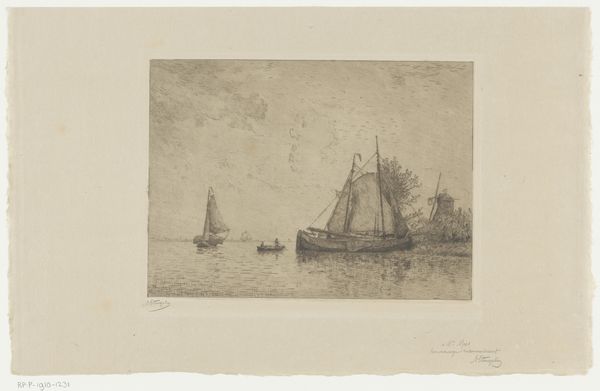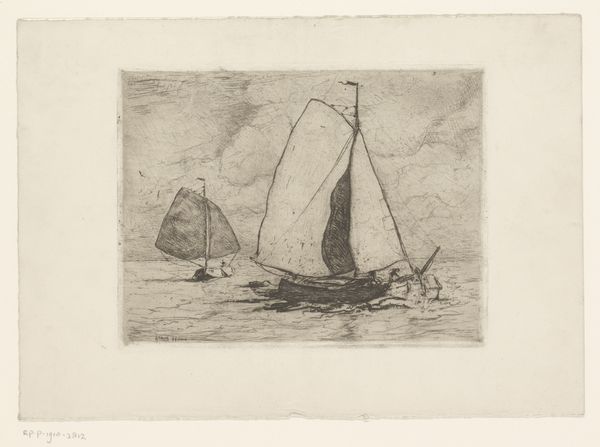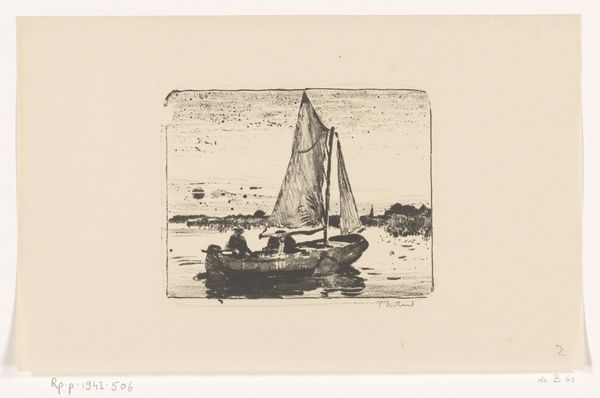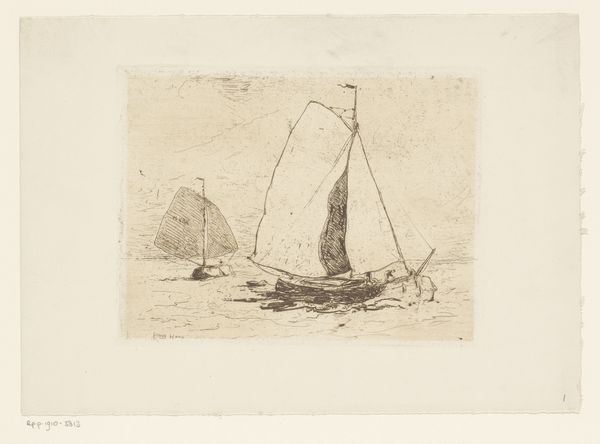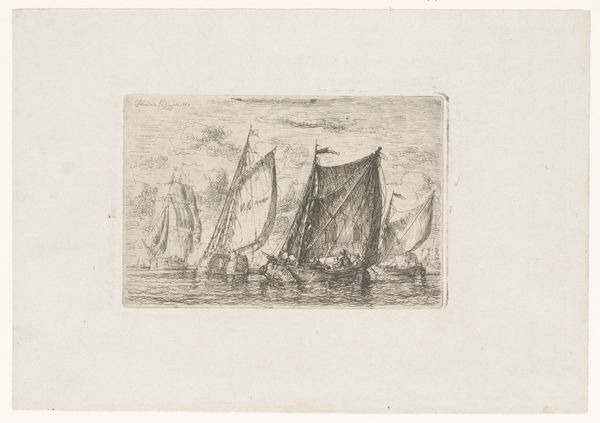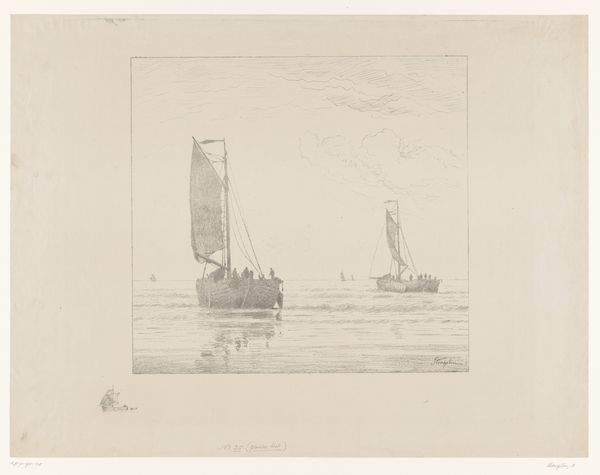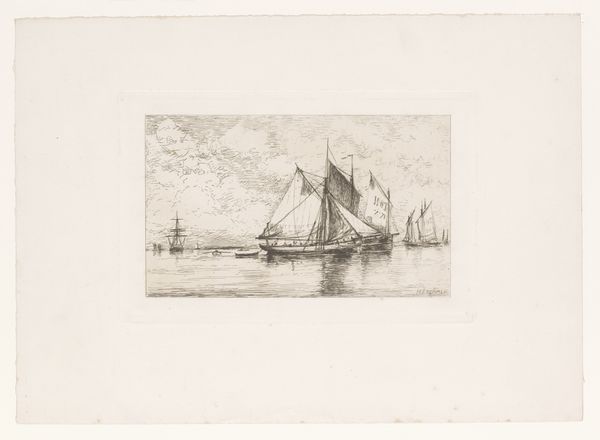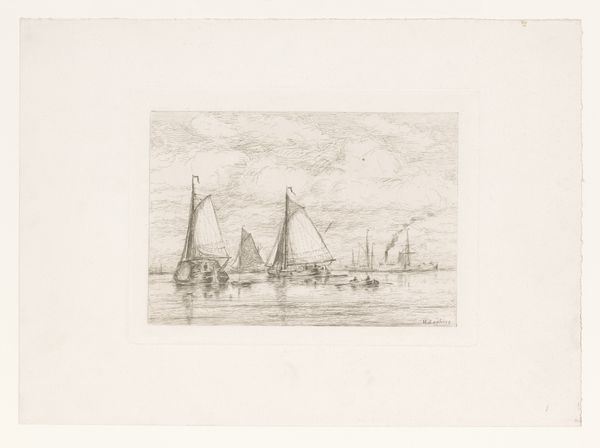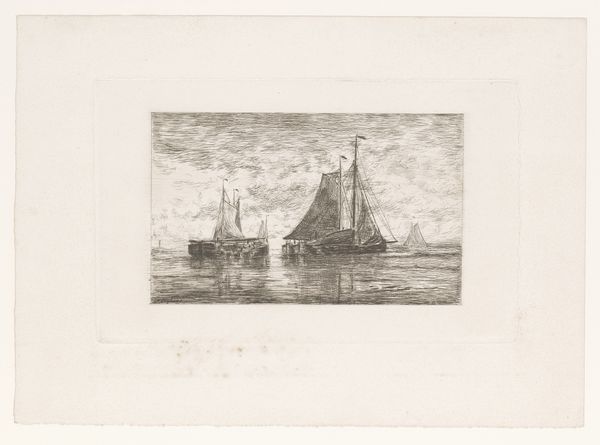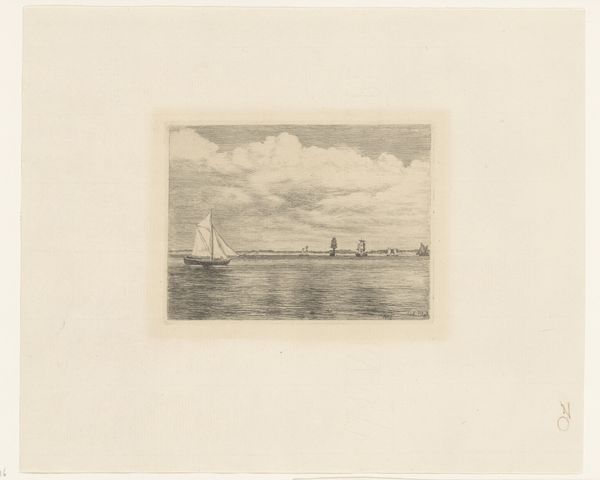
Dimensions: height 307 mm, width 439 mm
Copyright: Rijks Museum: Open Domain
Curator: This etching, "Zeilende schepen," by Willem Bastiaan Tholen, offers us a glimpse into maritime life sometime between 1870 and 1931. The work is currently held in the Rijksmuseum collection. What strikes you first about this print? Editor: It's the texture! You can almost feel the spray of the waves and the grit of the salt air. It’s all rendered in these incredible, almost feverish lines. I am intrigued by the materiality of the scene itself, the implied labor in building and operating such vessels, as well as the labor of the artist rendering it on the plate. Curator: That textural intensity really draws you in. What’s fascinating from a historical perspective is how this seemingly straightforward depiction is actually shaped by particular socio-economic forces. Consider the rise of leisure activities around the sea at this time and Tholen’s positioning of everyday working vessels as objects of artistic merit. Editor: Absolutely. Think about the industrial revolution churning away and folks getting an artistic rendering of work with their leisure spending! Were these boats part of the Dutch fishing industry at this time? It is interesting to think how a commercial tool has been transformed for aesthetic viewing. Also what kind of tools where involved in making the print itself? Curator: Yes, these were working vessels, and the act of depicting them elevates the labor, and indeed the craft of the etching process. Tholen was clearly part of a larger art market where representations of Dutch life, idealized or otherwise, were popular and saleable, showing its entanglement with burgeoning popular culture and marketability of these scenes for the rising middle class. The art market of course played a massive role in its success! Editor: Looking at this, the technique— the printmaking— almost feels more aligned with the kind of gritty reality the image evokes than something like a grand oil painting. The rough textures, the imperfect lines…they contribute to a sense of honesty, or at least the impression of it. How did the Dutch system allow this process and depiction to be recognized? Curator: The democratization of art was occurring through the advent of museums, galleries, and art education, with social and economic dynamics defining Tholen’s work. It gave works like this, representing everyday life a level of credibility which made his and the impressionist's careers possible! It shows the transition in image making being more about subjecthood of the maker and the material than grandeur of the represented event. Editor: Well, this conversation has made me see those frantic lines in a completely different light. Now, I'm curious to examine other works made at the same time! Curator: Agreed. By looking at these sorts of intersections, we gain so much more of a detailed and meaningful insight into a work like this. Thank you for joining me.
Comments
No comments
Be the first to comment and join the conversation on the ultimate creative platform.
